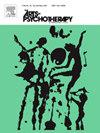On virtual reality: A thematic analysis from a dance movement therapy perspective
IF 1.5
3区 心理学
Q3 PSYCHOLOGY, CLINICAL
引用次数: 0
Abstract
Virtual Reality (VR) is a technology composed of several integrated elements that allow simulation and interaction in an immersive environment. Various sensory and cognitive stimuli must be experienced through the human body to accomplish this phenomenon. For this reason, VR is studied and used more frequently in different therapeutic and socio-educational environments. Given its embodied, intersubjective, enactive, and emotive qualities, adjectives also used to describe dance movement therapy (DMT), it is necessary to develop a conceptual and theoretical approach from an embodied perspective. From a reflective standpoint, this article analyzes some important possibilities and precautions to evaluate the possible integration of VR in DMT and vice versa. The study of VR not only concerns DMTs but also different therapists and professionals interested in this type of technology. While DMT continues to expand its fields of action and methods, more research is still required on VR-assisted interventions. A wider exploration and training in the field are necessary to provide ethical and updated care according to the needs and problems of today’s contemporary world.
论虚拟现实:从舞蹈动作治疗角度的主题分析
虚拟现实(VR)是一种由几个集成元素组成的技术,可以在沉浸式环境中进行模拟和交互。人体必须经历各种感官和认知刺激才能实现这一现象。出于这个原因,VR在不同的治疗和社会教育环境中得到了更频繁的研究和使用。鉴于舞蹈运动疗法(DMT)的具身性、主体间性、动作性和情绪性,形容词也被用来描述DMT,有必要从具身性的角度发展一种概念和理论方法。本文从反思的角度分析了一些重要的可能性和注意事项,以评估VR与DMT的可能整合,反之亦然。VR的研究不仅涉及dmt,还涉及对这类技术感兴趣的不同治疗师和专业人士。虽然DMT继续扩大其行动领域和方法,但仍需要对vr辅助干预进行更多研究。根据当今世界的需要和问题,有必要在这一领域进行更广泛的探索和培训,以提供合乎道德和最新的护理。
本文章由计算机程序翻译,如有差异,请以英文原文为准。
求助全文
约1分钟内获得全文
求助全文
来源期刊

Arts in Psychotherapy
Multiple-
CiteScore
3.20
自引率
11.10%
发文量
66
期刊介绍:
The Arts in Psychotherapy is a dynamic, contemporary journal publishing evidence-based research, expert opinion, theoretical positions, and case material on a wide range of topics intersecting the fields of mental health and creative arts therapies. It is an international peer-reviewed journal publishing 5 issues annually. Papers are welcomed from researchers and practitioners in the fields of art, dance/movement, drama, music, and poetry psychotherapy, as well as expressive and creative arts therapy, neuroscience, psychiatry, education, allied health, and psychology that aim to engage high level theoretical concepts with the rigor of professional practice. The journal welcomes contributions that present new and emergent knowledge about the role of the arts in healthcare, and engage a critical discourse relevant to an international readership that can inform the development of new services and the refinement of existing policies and practices. There is no restriction on research methods and review papers are welcome. From time to time the journal publishes special issues on topics warranting a distinctive focus relevant to the stated goals and scope of the publication.
 求助内容:
求助内容: 应助结果提醒方式:
应助结果提醒方式:


